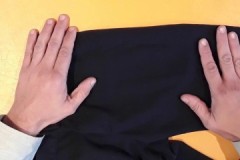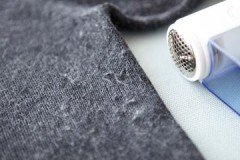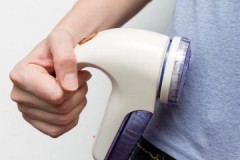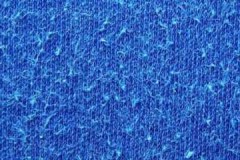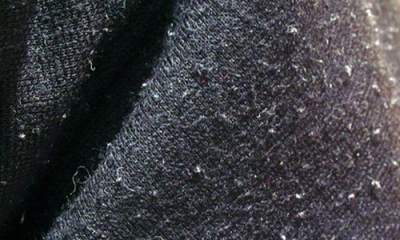 The new garment looks flawless, but after washing it can change. Rolled fibers will appear on the fabric, which will spoil the appearance of the product and the mood of the hostess.
The new garment looks flawless, but after washing it can change. Rolled fibers will appear on the fabric, which will spoil the appearance of the product and the mood of the hostess.
Pills are not always a sign of a poor-quality product, the reason may be improper care and operation. You can fix the problem if you have patience and follow the advice of experienced housewives.
How to remove spools from bed linen, socks, sweatshirts and other things, the ceiling in the car, we will tell in the article.
Content
Reasons for the appearance
More often pellets appear on soft, loose fabrics with a pile or admixtures of polyester, acrylic or nylon fibers. They are located in places of constant friction or interaction with foreign objects. For example, a bag or a backpack.
The reasons may be:
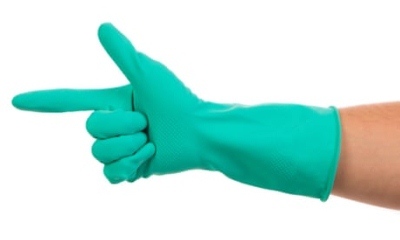 Improper care... The washing program, temperature setting and detergent are not suitable for the type of fabric.
Improper care... The washing program, temperature setting and detergent are not suitable for the type of fabric.- Mixing composition of the material... The tandem of synthetic and natural fibers is subject to rolling.
- Density and structure of fabric... Threads of medium and low twist, weak weaving, as a result - a loose fabric that quickly loses its appearance.
Before blaming the manufacturer, carefully study the composition and recommendations on the product label. She will help you find the cause of the problem.
How can you quickly remove lumps on fabric at home?
Rapid reaction to rolled fibers makes it easier to deal with them... It is necessary to regularly review things, special attention should be paid to products made of wool and knitwear. There are several ways to remove lumps, but not all are safe for delicate fabrics.
Stationery tape
The adhesive surface effectively removes pet hair from things, it will cope with small pellets.
How to apply:
- Spread the fabric on a flat surface.
- Cut off a piece of tape.
- Stick it on the damaged area.
- Tear off in one quick motion.
- Repeat if necessary.
The method is not suitable for large damage to the tissue structure.
Shaver
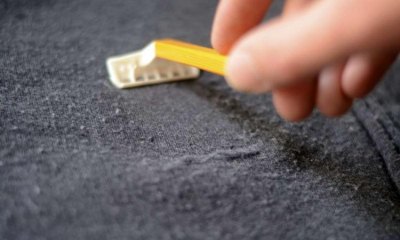 The device is dangerous for the owner's things and hands; care should be taken when working with them. The method is effective for accessories (hats, gloves) and hosiery.
The device is dangerous for the owner's things and hands; care should be taken when working with them. The method is effective for accessories (hats, gloves) and hosiery.
To remove rolled fibers:
- stretch the material;
- take a used machine (should not be too sharp);
- lead them along the damaged area from the bottom to the top.
When moving the tool over the workpiece, it is necessary to tighten the work surface well every time. It is not recommended to cut off the pellets with a razor from large items (dresses, cardigans) and knitwear with a pile (containing angora, mohair).
Toothbrush
Do not throw away your used toothbrush, it will help to cope with the pellets on delicate fabrics.
Instructions for use:
- Spread out the product on a hard surface.
- Take a soft bristled brush.
- Comb out rolled particles along the grain.
- Pour water into the basin with a temperature of no more than 30 degrees.
- Add table vinegar.
- Rinse the item in solution.
- Dry on a terry towel unfolded.
Comb
The method is suitable for removing large pellets from large items or small accessories made of thick woolen thread.
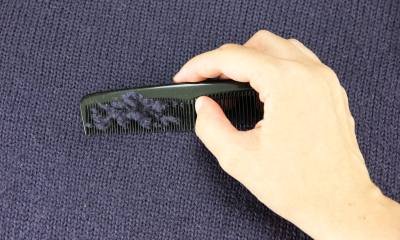 This requires:
This requires:
- take a hairbrush with fine, frequent teeth;
- treat the damaged surface with it in the direction of the fibers;
- collect the combed-off particles from the device.
Handle the knitted fabric with a comb carefully so as not to snag the thread with the teeth and not to tighten.
Abrasive materials
To get rid of the problem, you will need:
- fine-grained sandpaper (sandpaper),
- a hard sponge (new and dry) or a piece of pumice.
Abrasives are effective for removing rolled-up areas on lint-free materials. It is enough to lay out the thing and clean off all unnecessary with neat movements with the help of devices.
How to clean with a removal machine?
A specially designed machine will help you quickly and effectively get rid of rolling marks on your favorite items.
The device is equipped with:
- a fan for sucking the pellets into the grate;
- stainless steel blades to remove them from the surface of the fabric;
- container in which the cut particles are collected.
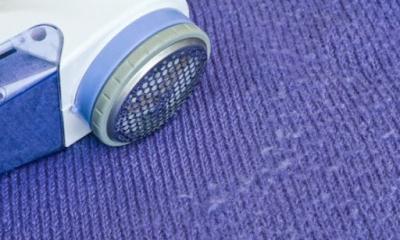 Mode of application:
Mode of application:
- Insert batteries.
- Enable with the button.
- Process the surface of the product in a circular motion.
For knitted fabrics with a pile, you need a device with the ability to adjust the height of the blade. An overview of the pilling machines is presented in this article.
Features of processing various things
In most cases, the problem can only be solved by mechanical action on the material and the correct choice of fixture.A cheat sheet for removing rolled fibers:
| Fabric type | Properties | Acceptable means |
| Woolen | Pile is present, deformed | Scissors, toothbrush |
| Jersey | Strongly stretched | Blade, razor, toothbrush, abrasive side of the dishwashing sponge |
| Dense | Does not change shape, is less likely to be damaged | Scissors, razor, scotch tape, brush |
For the listed types of fabric, an effective and safe way is a pilling machine.
He will tell you how to remove the pellets from the jacket this article, from a sweater - this, from trousers - this.
Off socks
Small footprint allows you to experiment with different fixtures... The spools can be carefully cut with a razor or a machine with a small grid diameter. If the socks are made of thick yarn, they must be combed out with a comb or removed with nail scissors.
With coat
The choice of a way to solve the problem directly depends on the structure of the material. Manicure scissors are often effective, but the process is labor and time consuming.Dense fabric can be cleaned with a fine-grained sandpaper or pumice stone.
From a T-shirt
Rolled fibers on a T-shirt can be removed with an industrial cleaner. Gels-powders Perwoll or Laska from the “Care and Recovery” series will cope with the problem in 2-3 washes.
Their regular use will prevent the material from rolling down in the future, restore the damaged structure of the fibers and preserve the color of the product for a long time.
From bed linen
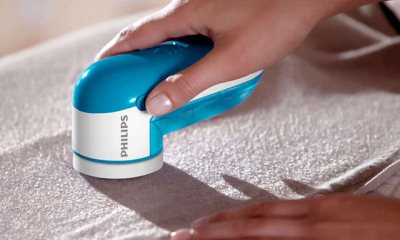 Pulls appear on sets made of fabrics with the addition of synthetic fibers (acrylic, nylon, polyester).
Pulls appear on sets made of fabrics with the addition of synthetic fibers (acrylic, nylon, polyester).
You can deal with them in any of the above ways., abrasives and brushes, scissors and a special machine are suitable. To avoid a time-consuming process, you must follow the manufacturer's care recommendations on the label.
You shouldn't save on bedding. Verified product manufacturers - Russia, Turkey, China and European countries. The best composition is natural fibers of cotton, flax, silk.
With a sweatshirt
Small rolled-up areas of the product can be tidied up with tape... If the method turns out to be ineffective, you will have to cut it off with nail scissors, a razor blade or a razor. Do not use a new machine for cleaning, it may damage the fabric structure.
Off dress and skirt
Abrasive materials such as pumice stone or sandpaper will help remove lumps from dense fabrics.
To quickly fix a problem with a large product it is better to use a special machine... Instructions for using the fixtures are described above.
From the mattress
Handling a problem over a large area is difficult. Scotch tape will be ineffective, it will take more than one hour to clean it off with an abrasive. The best way is a clipper that cuts the rolled fibers. But the effect will be temporary. To prevent the reappearance of the pellets, a mattress cover must be used.
Off the couch
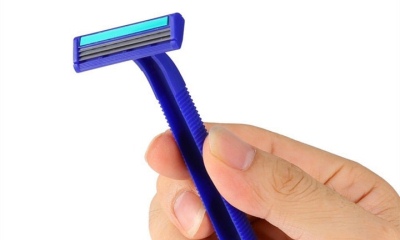 Rolled up areas of upholstery should be removed carefullyotherwise expensive furniture could be ruined. Often a machine, a blade and even a knife are used for cleaning at home.
Rolled up areas of upholstery should be removed carefullyotherwise expensive furniture could be ruined. Often a machine, a blade and even a knife are used for cleaning at home.
This is an unsafe method, if you use a blade with force, you can damage the fabric.
If the hostess is not sure that she can accurately solve the problem without additional costs for replacing the upholstery or the sofa itself, you should seek professional help.
From the ceiling in the car
After a poor-quality dry cleaning of the interior, there is a risk of the appearance of the “shaggy ceiling” effect. Pulls on upholstery fabric can be removed with a machine, but the process will take a long time... The easiest and fastest way is to use a rolled-fiber clipper.
You cannot brush off the lumps with a brush, this will aggravate the problem. If the ceiling of the cabin is badly damaged, the only way is to professionally stretch the fabric.
What shouldn't be done?
Not all methods are effective and versatile for different fabrics. Not recommended:
- Cutting rolled fibers from very thin material will cause damage.
- Clean the pellets with abrasive materials from products subject to deformation.
- To remove damaged areas from hosiery with a toothbrush, it will roll the fibers over the surface and ruin the thing.
- Use stationery tape and a sticky roller for long pile fabrics.
- Pulling out the spools with tweezers or hands, so you can pull the thread out of the canvas to the surface and aggravate the problem.
Housewives tips
In the struggle with the rolled-up surface of the fabric, the hostess does not always win, the thing can be completely ruined. It is easier to prevent the occurrence of a problem by following some simple rules:
 wash delicate fabrics only by hand or use a special program in an automatic machine;
wash delicate fabrics only by hand or use a special program in an automatic machine;- carefully select powders, gels and conditioners;
- observe the temperature regime of water (not higher than 30 degrees);
- avoid mechanical impact on the material when washing (do not rub, do not wring);
- remove rolled fibers at first appearance.
Before water-heat treatment, it is necessary to study the manufacturer's recommendations for care on the product label.
Conclusion
Removing pellets is risky and tedious... If the hostess is not ready for this, it is necessary to pay attention to the composition and complexity of care when buying a product, to give preference to new anti-peeling materials, or not to skimp on paying for professional dry cleaning services.
